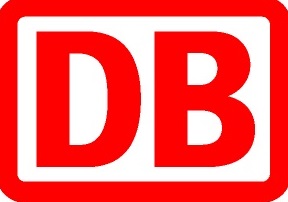Title Page
-
Conducted on
-
Prepared by
1.0 Fire Prevention & Evacuation
-
1.1 Are exits visibly marked and clear of obstructions?
-
1.2 Are fire doors closed securely at all times?
-
1.3 Are stairwells clear?
-
1.4 Are proper fire extinguishers available & inspected monthly?
-
1.5 Are special procedures in place for workers with disabilities to assist them to exits?
-
1.6 Are combustible materials stored in assigned storage cabinets or designated areas?
-
1.7 Are materials stored at least 18 inches away from sprinkler heads or 24 inches from ceilings where no sprinkler system exist?
-
1.8 Are fire drills held on a regular basis and documented?
-
1.9 Are electric space heaters plugged directly into the walls, have working tip over switch and are away from combustible materials?
-
1.10 Does the existing Emergency Evacuation Plan include a floor plan/map of the department, including emergency evacuation route and procedures with rally points and has all employee received documented training?
-
1.11 Are there assigned “Safety Captains” or leaders to manage the departmental plan and head counts?
-
1.12 Is there a process for employees to check in/out of the department that can be used for head count at rally points?
2.0 General Safety/Housekeeping
-
2.1 Are filing cabinets, bookcases and other items over 4 feet tall securely bolted to walls or floors?
-
2.2 Are materials on shelves above chest level secured by doors or straps?
-
2.3 Are cubicle walls secured?
-
2.4 Are heavy items place on lower shelves or in lower drawers to prevent tipping or injury?
-
2.5 Are file drawers kept closed when not in use?
-
2.6 Are step ladders provided for high storage areas?
-
2.7 Are coffee machines, etc. securely fixed to avoid risk of scalds?
-
2.8 Are office ares cleaned & maintained regularly?
-
2.9 Are storage rooms & recycling areas neatly maintained?
-
2.10 Are all wasted materials placed in the proper waste containers and emptied regularly?
-
2.11 Is flooring in good condition with loose rugs and mats secured?
-
2.12 Do electric fans have a grill or guard for finger protection?
-
2.13 Is paper cutter equipped with a guard?
3.0 Electrical Safety
-
3.1 Are all plugs, cords, electrical panels, and receptacles in good condition (no exposed conductors or broken insulation)?
-
3.2 Are extension cords being used correctly? (They must not be run through walls, doors, ceilings; not represent a trip hazard running across aisle ways; not to be used as a permanent source of electrical supply - have additional outlets installed; not be linked together; amperage rating appropriate for equipment in use. No “thin zip cords.”)
-
3.3 Is clear access (36 inch clearance) provided to electrical panels?
-
3.4 Are cord or cable systems used to manage all cords or cables?
-
3.5 Are extension cords at minimum 14 gauge (heavy-duty), 6’ or less, and servicing only one appliance or fixture?
-
3.6 Is faulty or broken equipment removed from service?
-
3.7 Are lamps well clear of drapes, papers and other combustible materials?
-
3.8 Are electrical supply closets free of all debris or other items (nothing stored in closets)?
4.0 Computer Workstations
-
4.1 Is the keyboard and mouse within easy reach?
-
4.2 Are keyboard and monitor aligned?
-
4.3 Are Chris used at computer workstations adjustable and in good condition?
-
4.4 Is leg and knee clearance available under the desk surface?
-
4.5 Are adjustable workstations in good working order (stay in place when adjusted)?
-
4.6 Are ergonomic keyboards, mouse, and desk made available?
5.0 Additional Comments
-
5.0 Did you observed anything else of concern that was not covered in the audit questions?












